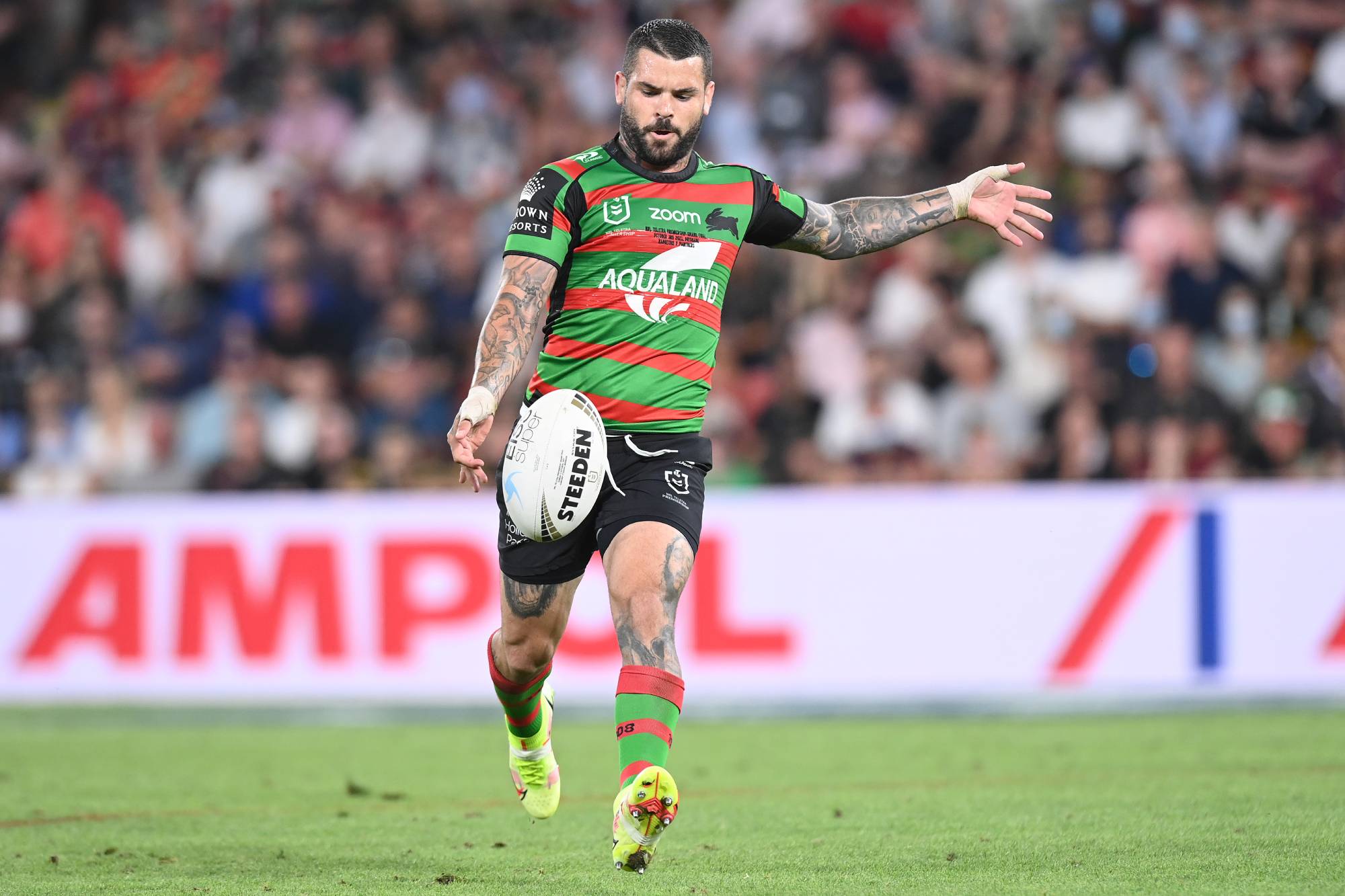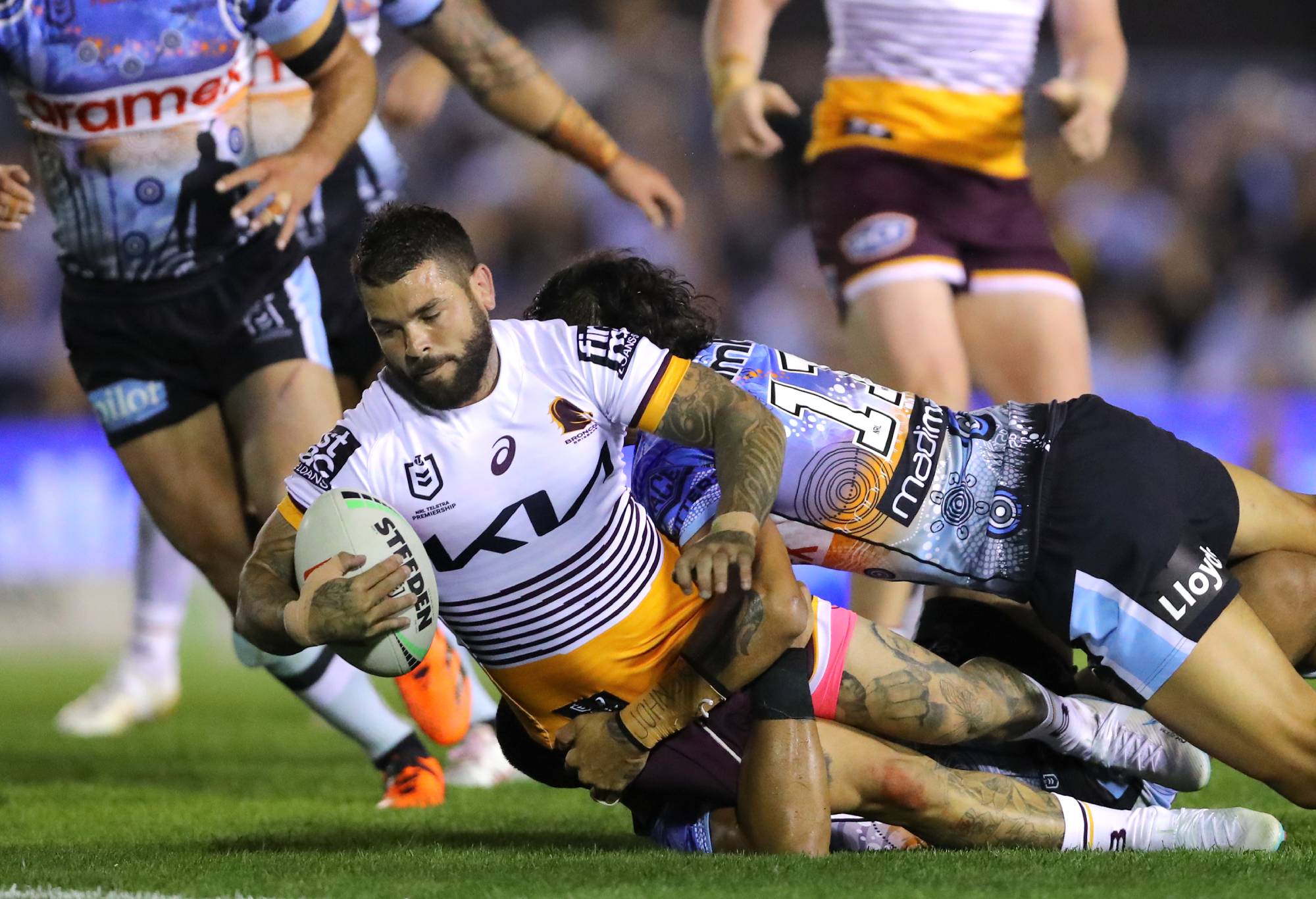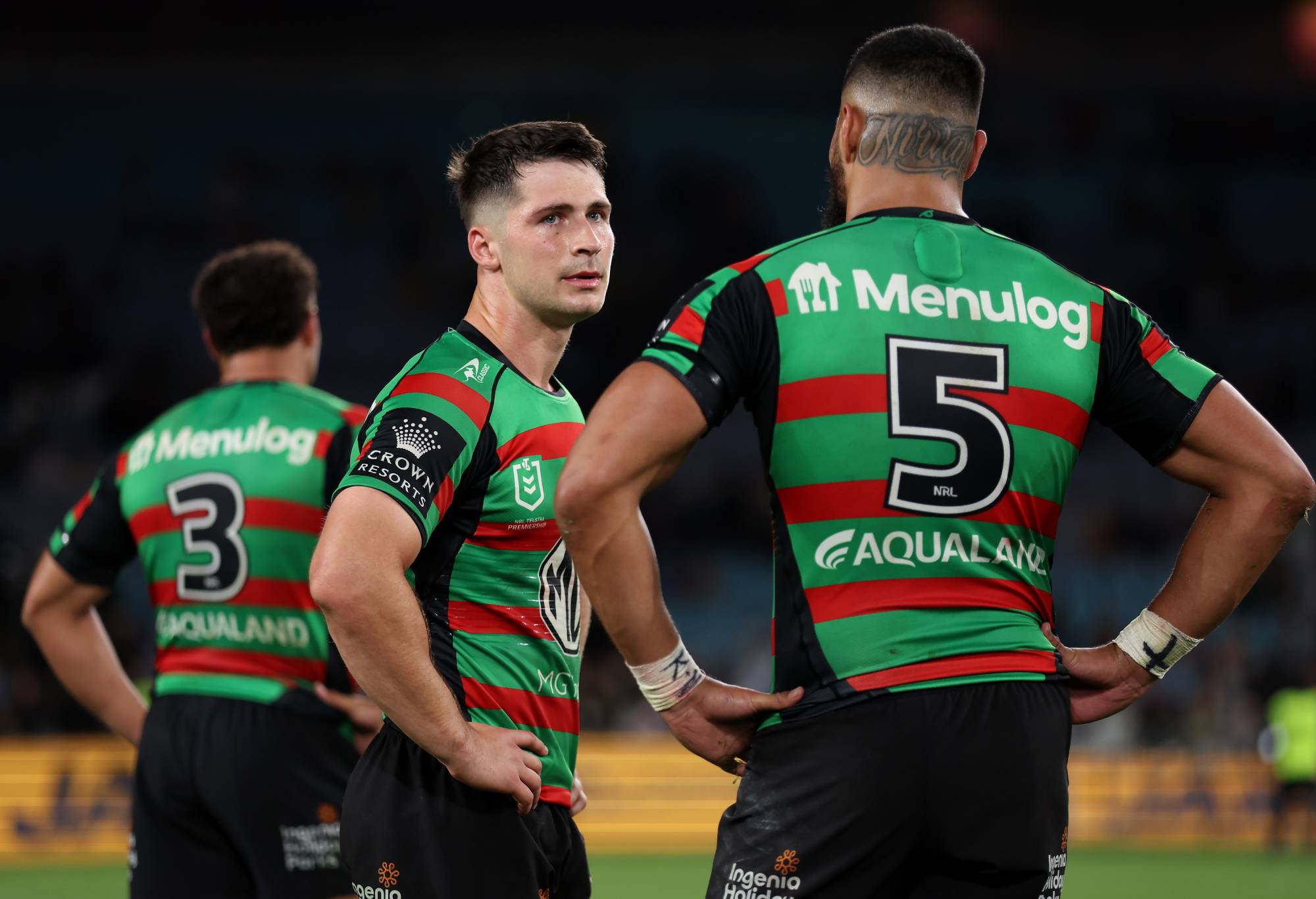Lachlan Ilias’ main crime, really, is not being Adam Reynolds.
Comparing a rookie to the greatest halfback in the club’s history is, obviously, a bit pointless for a number of reasons.
Reyno was a proven leader with 230 games for Souths, rep appearances and all that good stuff.
Lachy had one game in the NRL and basically no footy at all for the years prior as a result of Covid-induced shutdowns in the lower grade.
That was 2022, however, and Reynolds’ late career renaissance in 2023 only furthered the idea that the Bunnies had made the wrong call in letting their captain go in favour of an untested youngster.
If they had extended their man, they might have won that Prelim in 2022 and thus the comp. Had they had him in 2023, they might have made the finals and challenged again.
Of course, the only thing dumber than comparing a legend to a rookie is imagining the counterfactuals of a team sport extrapolated over two years and a thousand scenarios that didn’t actually happen.
We love to compare stats here at The Roar, however, and there is some utility in looking at Reynolds and Ilias in the same sample – just not how you might think.
Firstly, Reynolds is the most comparable player to Ilias tactically, because both have played the same role in the same system.
Souths have been pretty consistent stylistically so if we dig out what 2021 Reynolds did, we can look at 2022 Ilias and 2023 Ilias and see what he is doing differently.
We’ll pull out 2022 and 2023 Reynolds, too, just because we can, though Kevin Walters has played a vastly different style to Jason Demetriou, with different players and different goals.
Let’s get the traditional data caveats out of the way.
First, style is everything and forms a key part of the discussion around playmakers, so in data terms, we have to factor in what the coach actually wants their halfback to do. Just because they don’t doesn’t mean they can’t.
Second, the 2021 data on Reynolds is, obviously, from 2021, when the NRL went attack crazy.

(Photo by Bradley Kanaris/Getty Images)
Whether you call it the asterisk year or statsflation, an administrative aberration or a marketing masterstroke, it permanently has to be pointed out that all attacking numbers from that year are lifted by the rising tide of sudden rule changes.
Right, so: is Lachlan Ilias a worse halfback for Souths than Adam Reynolds?
The topline argument is that no, Ilias in 2023 is not worse than Reynolds in 2021. In fact in most measurable areas, he is better, and that includes the ridiculous numbers of that year in general.
Creatively, whether you look at assists, breaks, try assists and even kicking, Ilias comes out on top. The numbers don’t lie on this one.
Bear in mind the caveat above about style, because that is so important here. The reason 2023 Ilias outdoes 2021 Reynolds is because he fits what Souths are trying to do better.
But – and this is a Sir Mixalot sized one – both years of Ilias and 21 Reynolds are less productive than both years of Broncos Reynolds, which goes right to the heart of the team style point above.
The Broncos got Reynolds to make him their premier playmaker, chief organiser, team captain, head honcho, coach-in-waiting and whatever. They tell him to do everything.
There’s Reece Walsh, but he’s the Lamborghini out the back, while Reynolds is the driver. Ezra Mam is an outrider, tactically speaking, told to go create havoc wherever he can.
Ilias is the third, potentially fourth and maybe even fifth decision maker, which stands to reason given the age, experience and (probably) pay packets of his teammates.
Latrell Mitchell is the supercar – the Taree Ferrari – and the Bunnies have a full F1 pitcrew with Cody Walker, Cam Murray and Damien Cook setting the course.
It’s likely that Ilias will climb this pecking order as he gets more games, but don’t count on it: the numbers would suggest that Reynolds also wasn’t topping the list when he was there either.
Ilias’ Creativity Value (CV), a key advanced stat for playmakers, is right in the middle of the pack, but it doesn’t really matter because Walker tops the entire league for it among halves, Mitchell is one of the best fullbacks and Murray is one of the most creative locks.
Just visualise that sweeping Souths move and you’ll see that Ilias is well inside, two or three passes from the end. He’s starting them, not finishing them.

(Photo by Jeremy Ng/Getty Images)
The data clearly shows that Reynolds did the same thing in 2021, which is one of the reasons his numbers spiked on leaving South Sydney. He didn’t get better, he just got a different job.
On moving to Brisbane, Reyno’s CV leaps, a function of being closer to the action and told to lead the team around more.
Pretty much every relevant number goes up in 2022 and drops slightly in 2023, but never drop to where they were in 2021 at Souths – likely because he did everything, then Walsh and Mam came along and took some of the burden.
There’s a wider point here about how data in rugby league remains essentially underdeveloped, with a focus on outcomes and not processes.
In football, for example, we’re able to track attacking moves back down the chain of events through metrics like packing, xThreat or On Ball Value, with the idea of rewarding a player who did something positive if nothing came of it afterwards.
It’s why Try Assists don’t really matter that much (with the honorable exception of Kick Try Assists), but Line Break Assists do, because we don’t want to punish a playmaker for the winger who drops the ball over the line.
The best we can do is Try Contributions/Involvements (depending on where you get your data), but there isn’t much out there on how it is calculated and, given that it requires a try to be scored to be counted, it’s inevitably outcome biased in the same way that Try Assists are.
Seen as we’re comparing, however: Ilias is the joint fifth best in that area, with twice as many as Reynolds and beat him in 2022 as well, but Reynolds topped the list in 2021. It’s almost as if Souths’ system asks its halfback to do a different job, right?
We’ve ascertained that Ilias is, in general, at least as good within Souths’ system as Reynolds was the last time he played there, and could theoretically grow yet further into it as he gets more experience, gametime and responsibility.
That doesn’t make him better that Reynolds, who has flourished in a way that has exceeded most expectations at the Broncos, but it also doesn’t mean that Souths didn’t make the right call in letting him go.
It’s been stated before in these pages that getting rid of Reynolds and giving the keys to Ilias was the best move at the time for both the Bunnies and the Broncos.
Brisbane needed an old head to help their young guys and South Sydney could carry a younger, cheaper guy in order to maintain Mitchell, Walker and Murray as their biggest earners.
There’s also a whole other bit about opportunity cost, as Ilias would almost certainly have departed himself had Reynolds not been allowed to leave, much as Blake Taaffe has now done as a result of being trapped behind Mitchell.

(Photo by Matt King/Getty Images)
With Souths, it’s always a little emotional and the standards are always sky high, because that’s the nature of the club and their expectations. You can miss the finals at the Titans and Warriors, but not at the Bunnies.
The data, however, backs up Demetriou’s decision to pick the young guy and stick with him.
There are, obviously, still areas for improvement. Ilias’ kicking game is miles away from Reynolds’ and represents the next big area of improvement for him.
There are again system features at play here.
Souths were second last for total kicks and total kick metres, because they much preferred to play on the last tackle rather than punt the ball away, so lack of long kicking really isn’t something that should hold Ilias back.
There’s always a chicken and egg with these things – do they not bother because he isn’t the best at it? – but the hunch would that Souths just try to score on every set and only kick as a last resort.
In attacking situations, Ilias actually sits between Nathan Cleary and Chad Townsend for Kick Try Assists in 2023 and is right alongside Reynolds in terms of KTAs per attacking kick, suggesting that it was more that he wasn’t asked to do it that often than that he can’t do it.
This is further backed up by his net number of attacking kicks, which was right next to Walker. They were sharing the role, as they largely also do for long kicking.
It’s this dynamic that the data most identifies with both Ilias and Reynolds. Souths operate a collective, with no clear leader, and the Broncos don’t.
That was true when Reynolds was the 7 and is even more true now, with Ilias less important than Walker and Mitchell at least, if not also Murray and Cook.
This is all on a sliding scale, too, as the Broncos also play a highly system-oriented style (compared, for example, to the Storm), but in a different way, with Reynolds the main man, Walsh the finisher and Mam a spark plug – not to mention their two elite middles, Payne Haas and Pat Carrigan, who dominate in push supports and second phase.
There’s no right or wrong way to play footy, and the evidence of 2023 would be that the Broncos style worked better than Souths’ did.
At Round 10 of 2023, you might have said the opposite, but that’s fish and chip paper now. Souths missed the eight, the Broncos made the Grand Final.
Jason Demetriou is a smart guy, and he’ll know that Ilias wasn’t the problem last year. It was a system failure.
That will give him confidence in his 7 going forward – and hope that it can come good in 2024.































































































